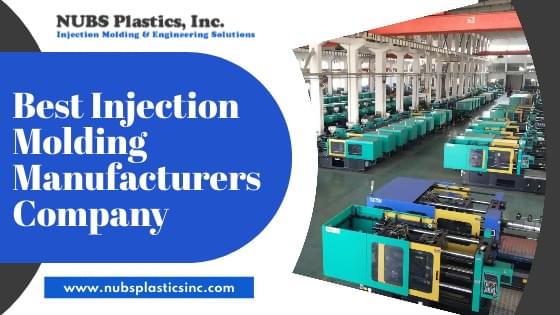
Plastic products have been a part of daily life for many decades. You can see many categories of plastic products, like bottles, tanks, pipes, and electronic items are just a few examples. Plastic products are used almost in every section of human life. Whether medical, transport, agricultural, education, technological, etc. The process of making these different items is also different. One of them is the injection molding process. Nubs Plastic Inc is the Best Injection Molding Company in the USA. Nubs Plastic Inc shares information about some plastic products through injection molding processes.
The Basic Knowledge of Plastic Materials
Raw materials of plastic have a state of solid and quality of elasticity. Raw plastic material categorizes into mainly two parts, according to their characteristics. These are thermoplastic plastics and thermosetting plastics. Raw plastic material is heated during the process to make desired products, but both have different characteristics. Thermoplastics can be heated many times and shaped every time according to the needs. Thermosetting plastics cannot shape more than once. PE, PP, PVC, and ABS, are some examples of thermoplastics, while epoxy resin and rubber are examples of thermosetting plastics.
Common Plastics Manufacturing Processes
Plastic Casting:
Plastic materials also are cast-like metal materials. Casting is a process for making final products. In this first, raw plastic is heated, and after the liquid state, it pours into a mold. It leaves for cooling down at room temperature. At the final level, products eject that are well finished and well surfaced. Acrylic, Phenolic resin, polyester, and Epoxy are the materials used. They generally use in making hollow products. For it, different processes use Dip Molding, Slush Molding, and Rotational Molding.
1. Dip Molding:
It is a process in which high-temperature mold soaks into the molten plastic liquid. Then it is slowly taken out and left for drying. Finally, it peels off for the output. One important thing to note is the process of ejecting out should control. As the speed will be, the thicker the layer will. It is cost-effective as well as can produces in small quantities. Products made from this process are balloons, plastic gloves, hand tool handles, etc.
2. Slush Molding:
It is a reverse process to dip molding. In the process, the molten plastic liquid pours into a high-temperature mold. Excess material pours out. Once the plastic solidifies, the mold opens to take out the products. In this process, the same time and thickness principle also applies the more time material stays thickness will be. The products prepare through this technique are more complex and have good appearance details. Products made in this process are like car interiors commonly made from PVC and TPU.
3. Rotational Molding:
In this process, the plastic molten liquid pours into two pieces of heated molding and then rotates the mold so the molten can reach its internal wall. After solidifying, the final products take out from the mold. Products made through this technique are pottery flower pots, children's play types of equipment, lighting items, etc.
Bow Molding:
This process is also known as hollow molding. The machine prepares with a feature of a blowing device in its middle. Raw plastic is heated and passed through a die-like tube strip. When both molds are closed, then air is blown into the mold. It works like a balloon and the inner wall of mold fill-ups. After cooling, the final products take out. Items made through this technique are cans, bottles, car parts for liquid filling, etc.
Plastic Extrusion:
In this process of plastic products manufacturing machine, the first thermoplastic material is heated and softened and then extruded into the molding die for molding. It is cooled down after a long section and cut into the required length. Products are cost-effective, and widely usable, like pipes, rods, films, water pipes, cables, etc.
Plastic Thermoforming:
In this process, the material is placed into a mold with a uniform thickness. Then it is heated to make the material soft. The surface of the mold is covered with the material and extruded after cooling down. It can be divided into two sections. One is hot pressing or compression molding and another is vacuum molding. The main difference in both processes is the application of pressure.
Plastic Injection Molding:
In this process, Injection Molding Manufacturers use granular raw materials. It heats into the machine, and molten material injects into a stainless-steel mold with high temperature and pressure. The temperature lowers, and the final product ejects with a thimble. Products made from this technique are more complex, high-precision, and diverse. These are daily necessities, auto parts, medical equipment, etc.
Conclusion:
Now you have ideas about plastic raw materials and different processes for making the products. Injection Molding Manufacturers are best in this section. The above-given details of processes state that every molding process has its technique for making the final products.
